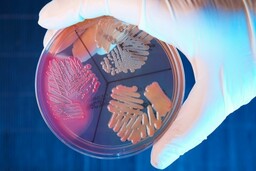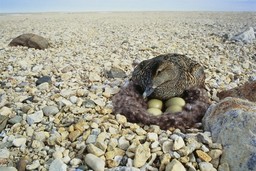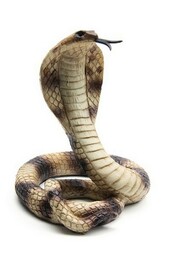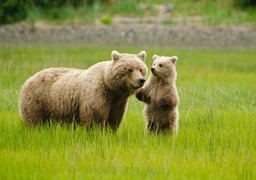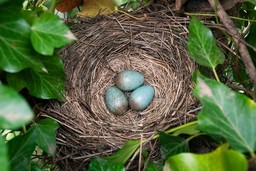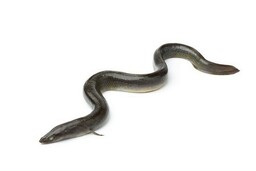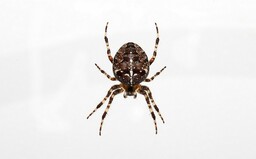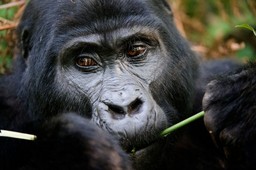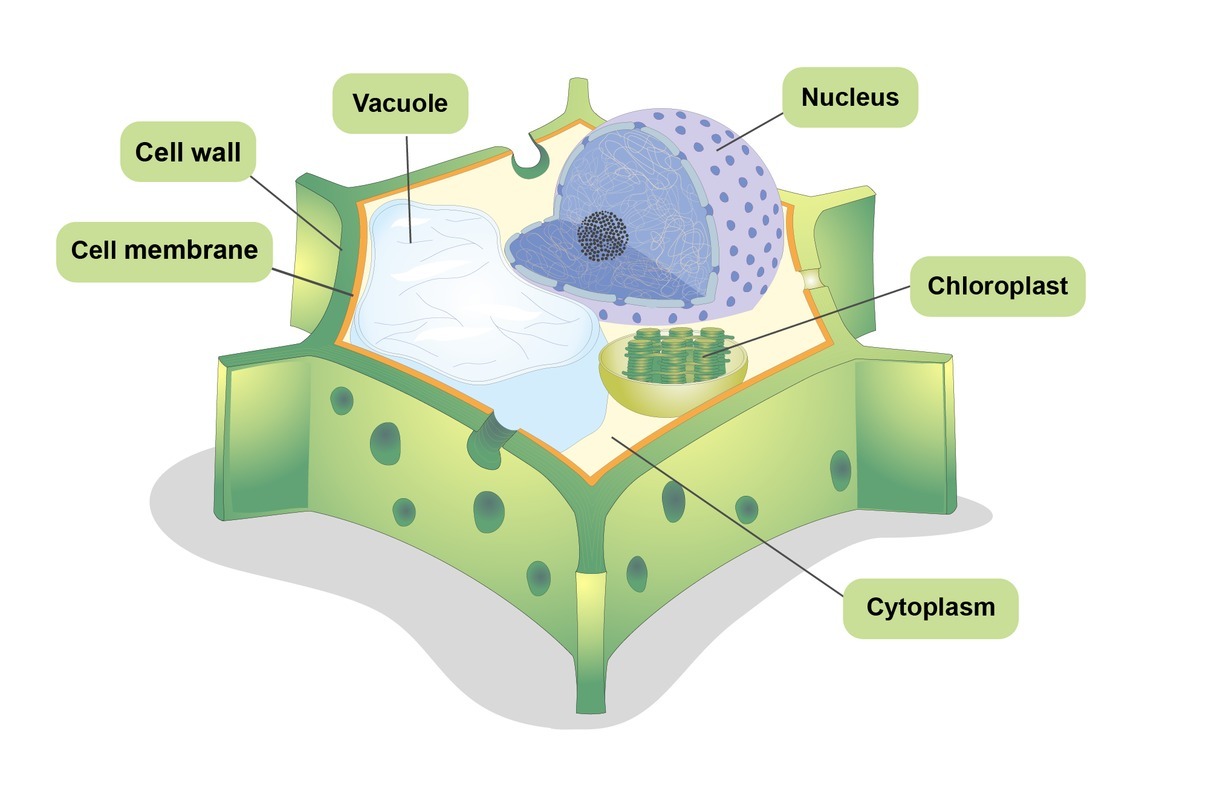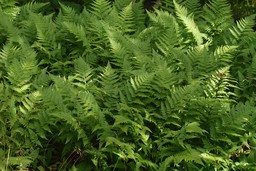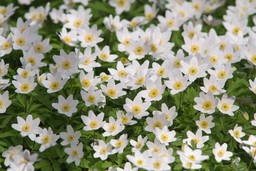37. Kingdoms of living organisms
Different kinds of living organisms: bacterium, plant, fungi, fish, amphibian, reptile, bird or mammal?
Different kinds of living organisms
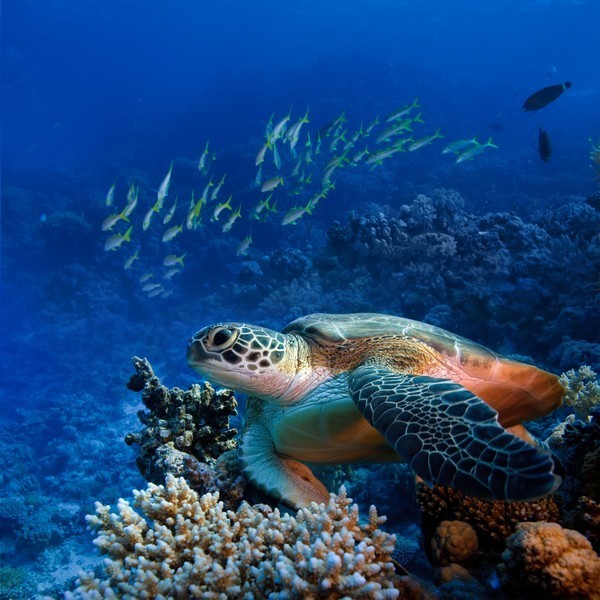 Our planet and its ecosystems are full of all kinds of different living organisms.
Our planet and its ecosystems are full of all kinds of different living organisms.
The picture on the right shows life on a coral reef.
The turtle in the picture is a reptile. In the background, you can see a school of fish swimming and searching for food. Both reptiles and fish are animals. More precisely, they are vertebrates.
The coral itself is comprised of the supporting structures of invertebrate animals.
Primitive plants known as algae live on top of these coral structures.
Bacteria
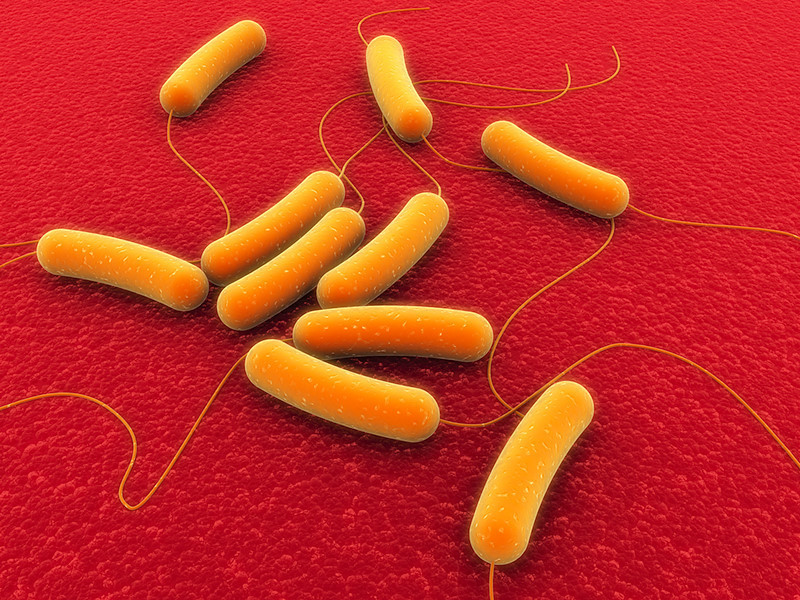 Living organisms can be divided into four main groups known as kingdoms: bacteria, fungi, plants and animals.
Living organisms can be divided into four main groups known as kingdoms: bacteria, fungi, plants and animals. - Bacteria are microscopically small unicellular organisms. They can be found almost everywhere: in the water, on the ground, in our skin, and even in our digestive systems.
- Some bacteria are parasites, whereas others are decomposers. Some bacteria are capable of photosynthesis, which means that they are autotrophic organisms.
- Some bacteria are harmful or even dangerous, as they can cause illnesses and diseases (the picture on the right shows E. coli bacteria, which cause diarrhea in humans).
- Bacteria reproduce quickly and in a straightforward manner: a bacterium cell can divide every 10 minutes!
- All bacteria are not harmful. For example, the human digestive system requires certain beneficial bacteria to function properly.
- Bacteria cells do not have nuclei, which means that they are prokaryotic organisms. They are the oldest group of living organisms in the world.
The characteristics of bacteria:
- no nuclei (=prokaryotic)
- unicellular
- microscopically small
- the first living organisms on planet Earth
- reproduce asexually by dividing
- can survive harsh conditions
- found almost everywhere on Earth
- both autotrophic and heterotrophic organisms
Plant cells
Plants comprise of many cells. This means that they are multicellular organisms. Plant cells also contain nuclei, which means that they are eukaryotic organisms.
The different parts of the plant cell have different functions:
The different parts of the plant cell have different functions:
- The cell wall supports the cell.
- The cell membrane regulates the intake and removal of substances.
- The cytoplasm is a liquid that fills the cell.
- The cell can store water in its vacuole.
- The nucleus is the "brain" of the cell. It contains the chromosomes.
- Chloroplasts are the organelles where photosynthesis takes place.
Plant structure
The plant uses its root to attach itself in its growing environment.
The plant uses its stem to grow towards sunlight. The plant needs sunlight in order to photosynthesize.
The leaves are where photosynthesis takes place. During photosynthesis, the plant uses the energy it gains from sunlight to produce sugar and oxygen from carbon dioxide and water. To do this, the plant must gather carbon dioxide from the air around it and use its roots to collect water from the soil.
The plant uses sugar to grow and reproduce.
Flowering plants reproduce via flowers. Flowers produce pollen, which is transported to another flower with the help of the wind or a pollinator (e.g. an insect). When the pollen grain of one flower fertilizes the egg cell of another flower, a seed begins to develop. The seed then grows into a new plant individual.
Sporangious plants do not have flowers. Instead, they reproduce via spores.
The plant uses its stem to grow towards sunlight. The plant needs sunlight in order to photosynthesize.
The leaves are where photosynthesis takes place. During photosynthesis, the plant uses the energy it gains from sunlight to produce sugar and oxygen from carbon dioxide and water. To do this, the plant must gather carbon dioxide from the air around it and use its roots to collect water from the soil.
The plant uses sugar to grow and reproduce.
Flowering plants reproduce via flowers. Flowers produce pollen, which is transported to another flower with the help of the wind or a pollinator (e.g. an insect). When the pollen grain of one flower fertilizes the egg cell of another flower, a seed begins to develop. The seed then grows into a new plant individual.
Sporangious plants do not have flowers. Instead, they reproduce via spores.
Fungi
 Fungi differ from plants in several ways.
Fungi differ from plants in several ways.Fungi have no roots, stems or leaves. Instead, fungi are solely comprised of mycelia. These mycelia are networks of fungal cells.
Fungal cells do not contain photosynthetic chloroplasts. This means that fungi cannot produce their own energy in photosynthesis, like plants do. Instead, fungi gain their energy from plants. This means that they are heterotrophic organisms.
Some fungi live in symbiosis with trees and plants, whereas others act as decomposers.
The visible part of a fungi is called the fruit body. It is a reproductive structure that releases spores. Only some species of fungi produce them.
Animals
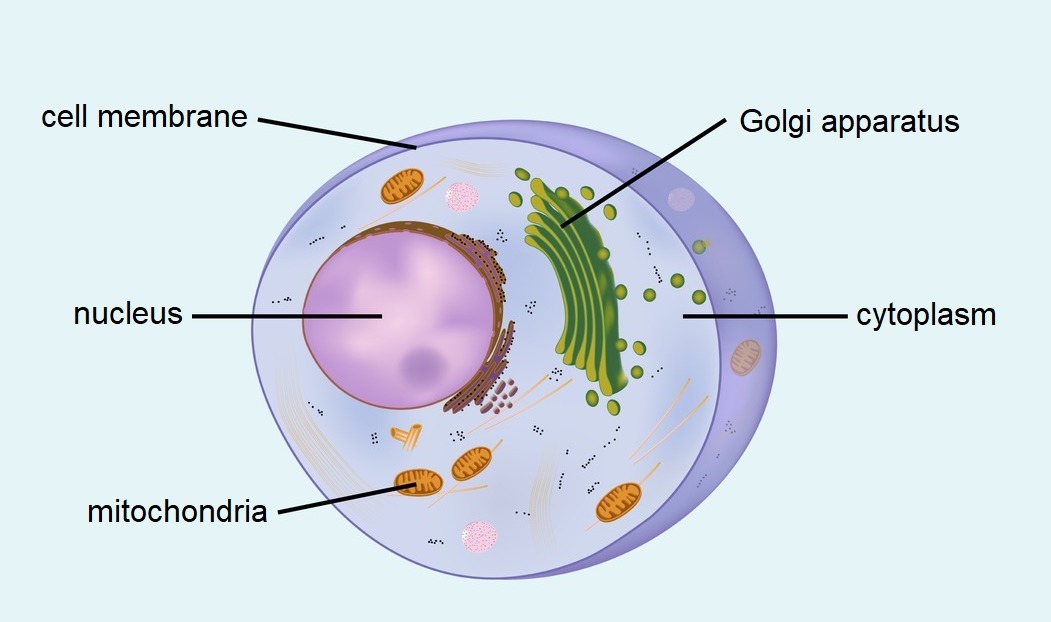 Animals are multicellular animals. They are capable of moving.
Animals are multicellular animals. They are capable of moving. Like plants and fungi, animals are made of multiple cells. Animal cells do not have cell walls or chloroplasts. As a result, animals cannot produce their own energy in photosynthesis, but must instead consume other organisms in order to gain energy for growth and reproduction.
Animals reproduce sexually: a male sperm cell fertilizes a female egg cell, and a new individual begins to develop. However, there are some exceptions: some animals, such as jellyfish, can reproduce by "copying" themselves.
The animal kingdom contains millions of different species. We will focus on the main groups of the animal kingdom (invertebrates and vertebrates) in more detail in the following two chapters.
Fungi, plants and animals
Protists
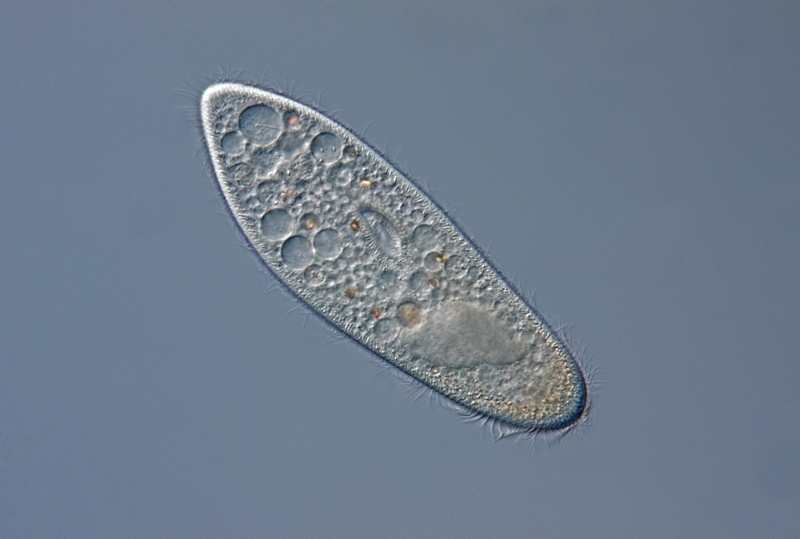 Our planet is also home to living organisms that are more primitive than plants, animals and fungi. Because these unicellular organisms cannot be classified in any other kingdom of living organisms, they are considered as their own group, called protists.
Our planet is also home to living organisms that are more primitive than plants, animals and fungi. Because these unicellular organisms cannot be classified in any other kingdom of living organisms, they are considered as their own group, called protists.Protists are not related to one another. Many microscopically small living organisms, such as the malaria parasites and amoebas, are protists.
The image on the right shows a protist known as a paramecium. It is an unicellular organism found in water ecosystems.
Viruses are not living organisms
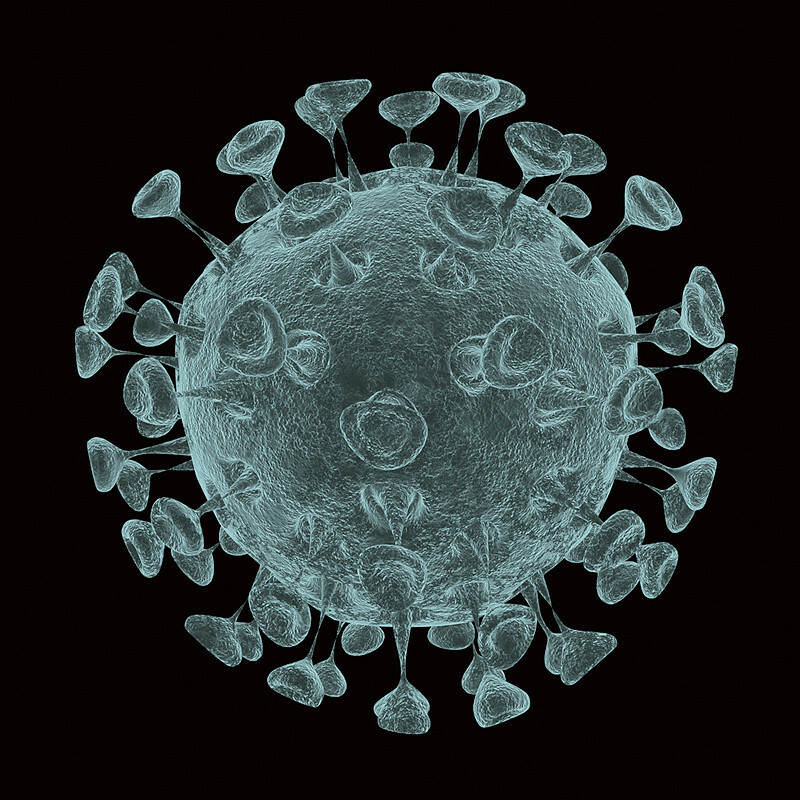 Viruses are not considered living organisms. They cannot live independently, but instead always require a host species in order to survive.
Viruses are not considered living organisms. They cannot live independently, but instead always require a host species in order to survive. Viruses are small parasites that live in the cells of living organisms. They are so small that one cell can contain thousands of them.
Many viruses are harmful. They cause illnesses, such as the flu.
Viruses spread easily from one living organism to another. This is why it is important to take care of your hygiene.
Photograph on the right: A microscopic image of a virus. The genome of the virus is located under its shell.
Terminology
| Term | Explanation |
|---|---|
| invertebrate | An animal that does not have an internal skeleton. E.g. insects. |
| vertebrate | An animal that does have an internal skeleton. Fish, amphibians, reptiles, birds and mammals. |
| bacteria | Small unicellular organisms. |
| virus | A small parasite living in the cell of a living organism. |
